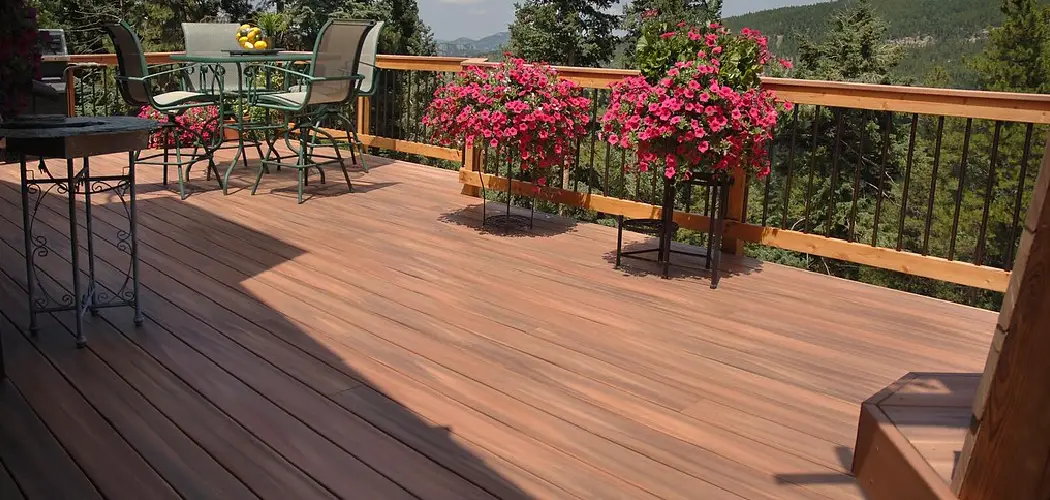Slipping on the deck is one of the main safety concerns for homeowners with composite decking. Everyone loves enjoying a summer day outside, but when you have surfaces that are too slippery it can put your family and friends at risk.
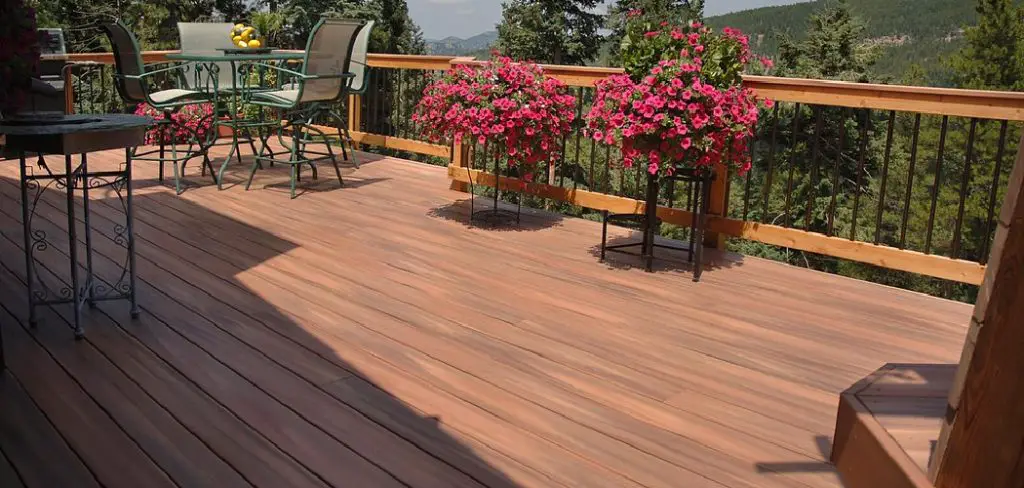
But there’s no need to worry – with a few simple steps on how to make composite decking less slippery, you can make composite decking less slippery and enjoy spending time outdoors safely!
In this blog post, we’ll share some tried-and-true tips on how to reduce the slipperiness of your decking so you can relax and take in all that beautiful outdoor living space without worrying about slipping or sliding. Read on to learn more!
What is the Composite Deck?
Composite decking is a popular choice for outdoor living spaces because it offers the look and feel of wood without all the maintenance. It’s composed of recycled plastic materials and wood fibers, making it both durable and low-maintenance.
However, one issue that comes up with composite decking is its tendency to be slippery when wet. This can be a major safety concern for homeowners, so it’s important to take steps to reduce the slipperiness of your decking and make it safer for everyone.
Essential Tools
Before we dive into the tips on how to make composite decking less slippery, let’s take a look at some essential tools you might need.
You will need:
Deck Cleaner or Power Washer
This will help you remove dirt and debris from your deck and make it less slippery.
Anti-Slip Strips or Coating
These products can provide additional traction on the surface of your deck to reduce slipping.
Sandpaper or Sanding Block
This will help you create added texture for more grip on the surface of your deck.
Step-by-Step Guidelines on How to Make Composite Decking Less Slippery
Step 1: Clean the Surface
The first step to making your composite deck safe and slip-free is to clean the surface. Use a power washer or any type of outdoor cleaner that is designed for composite decks and spray it onto the surface of the deck. This will help remove dirt and debris that may be making the deck slippery.
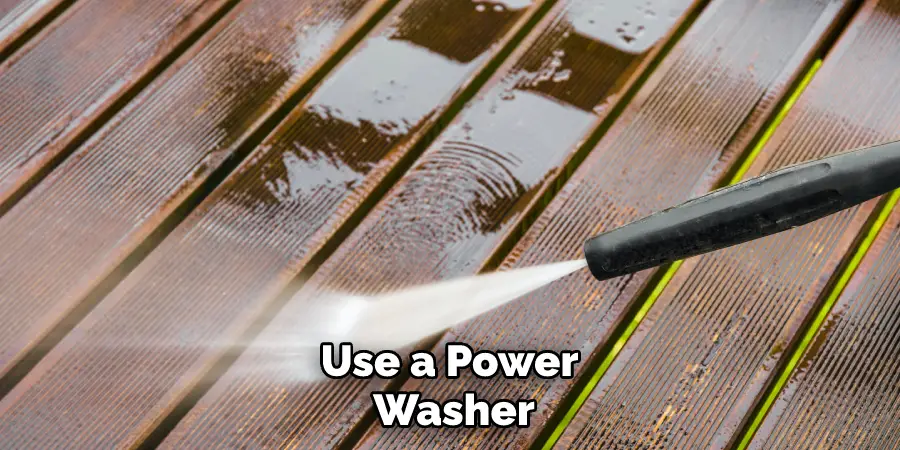
Step 2: Apply Anti-Slip Strips or Coating
Once your deck is clean and dry, you can apply anti-slip strips or coating to the surface of your decking. These products are designed to provide additional traction on the surface of your deck, reducing slipping when wet. Be sure to read all instructions before applying these products. It is important to follow the manufacturer’s instructions carefully.
Step 3: Sand Down Edges If Necessary
If the edges of your composite decking are too slick, you may need to sand them down slightly in order to create more texture for added grip. Use a sandpaper or sanding block and gently rough up the edges of your decking. This should create enough texture to make it less slippery when. If you have a power washer, you can also use it to rough up the edges of your composite decking.
Step 4: Add Non-Slip Mats or Rugs
Adding non-slip mats or rugs to the surface of your composite decking can also help reduce slipping and sliding when wet. Place them around any areas that are particularly slick, such as near pools or hot tubs, and they will provide additional traction on the surface of your deck. This is also a great way to add a touch of style to your outdoor living space.
Step 5: Install Handrails
Installing handrails is a great way to add more grip and stability to your composite decking. They not only look great but will help reduce slipping on the steps leading up and down from your backyard living space. But be sure to install them securely and firmly into the ground or railing so they can provide proper support.
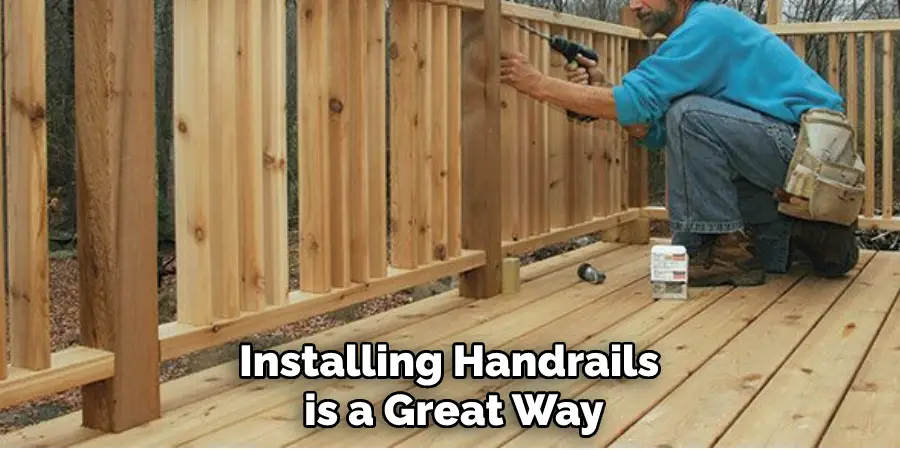
Step 6: Keep the Deck Clean
It’s important to keep your composite deck clean at all times. Dirt, debris and leaves can accumulate on the surface of your decking and make it slippery when wet. Make sure you are cleaning your deck regularly in order to maintain its nonslip properties. It is also important to check for any signs of wear and tear, as this can make the deck even more slippery.
Step 7: Seal the Deck
If possible, seal or finish your composite deck with a waterproof sealant or non-slip coating. This will help protect it from moisture while also making it less slippery when wet. Be sure to read all instructions carefully before applying any type of sealant or coating to your composite decking. However, if you have an older composite deck that has not been sealed or finished, it is best to skip this step in order to avoid damaging the material.
Step 8: Setup No-Slip Mats in High Traffic Areas
If you have high-traffic areas on your composite deck, set up some no-slip mats in those areas. This will provide extra traction on the surface of your deck and make it less slippery when wet. Otherwise, any accumulation of dirt and debris in these areas can make your decking dangerously slippery.
Step 9: Use Adhesive Strips
You can also use adhesive strips to help reduce slipping on your composite deck. These strips are designed to provide added grip and stability when applied to the surface of your decking. They come in various sizes and colors, so be sure to find a strip that matches the color of your decking for the best results.
Step 10: Add Non-Slip Paint
Another option is to add non-slip paint or coating to the surface of your composite decking. This will provide extra grip and make your deck less slippery when wet. Make sure to read all instructions carefully before applying the paint or coating to your composite decking. But if you have an older composite deck that has not been finished or sealed, it is best to skip this step.
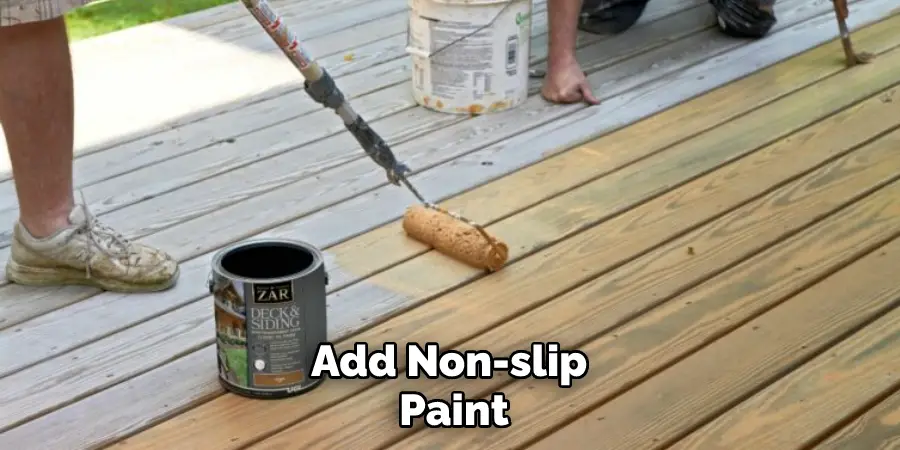
Step 11: Be Careful When Wet
Even if you take all of the above steps to make your composite deck less slippery, it’s still important to be careful when it’s wet outside. Wear shoes with good traction and avoid running on the surface of your decking. This will help ensure that everyone remains safe while enjoying your backyard living space!
Step 12: Check Your Deck Regularly
As with any outdoor structure, it’s important to regularly check your composite deck for signs of wear and tear. Look for any areas that may be particularly slick or slippery, such as around pools or near staircases. If necessary, adjust your maintenance routine in order to keep these areas safe and slip-free.
By following these simple steps on how to make composite decking less slippery, you can easily make your composite decking less slippery and much safer for both you and your family members. Be sure to keep up with regular maintenance and cleaning to ensure that your deck remains non-slip for years to come. Enjoy your backyard living space!
Do You Need to Hire a Professional?
If you’re unsure about how to make your composite deck less slippery or if you would like some extra help, you may consider hiring a professional. A professional can come out and assess the situation and provide customized solutions that are tailored to your specific needs. This will ensure that your composite decking is safe and non-slip for years to come.
How Much Will It Cost?
The cost of hiring a professional to make your composite deck less slippery will vary depending on the company you choose and the size and scope of the project. Generally, you can expect to pay anywhere from $200-$500 for these services.
In conclusion, making your composite deck less slippery doesn’t have to be difficult. By following the steps outlined above and hiring a professional if necessary, you can easily make your composite decking safer and more slip-resistant for years to come. Enjoy your backyard living space!
Frequently Asked Questions
Q: How Often Should I Check My Composite Deck for Signs of Wear and Tear?
A: It’s a good idea to regularly check your composite deck for any signs of wear and tear, such as slippery spots or areas in need of re-sealing. Check your deck at least once a month to make sure that it remains safe and slip-free.
Q: How Can I Make My Composite Deck Less Slippery in Winter?
A: To make your composite deck less slippery during the winter months, you can use adhesive strips, non-slip paint, or no-slip mats. Additionally, be sure to clear away any snow and ice from your deck as soon as possible to minimize slipping hazards.

Q: Can I Pressure Wash my Composite Deck?
A: Yes, you can pressure wash a composite deck but it’s important to follow all instructions carefully. If done incorrectly, pressure washing can cause damage to the surface of your decking. It’s best to hire a professional if you plan on using this method for cleaning your composite deck.
Conclusion
When it comes to composite decking, slippery surfaces can be a major safety hazard. But with the right preparation and products, you can make your composite decking less slippery. By using a traction agent or abrasive material as a liquid or powder coating, you can improve the surface’s coefficient of friction and provide additional purchases.
To ensure that your product works well in wet conditions, look for products specifically designed to do so. Additionally, if stair treads are an issue on your composite deck, adding anti-slip tape will do the trick. Lastly, consider incorporating raised pattern areas into your composite deck design to help add additional grip in slippery environments. With these tips on how to make composite decking less slippery in mind, you can keep your composite deck from becoming a disaster zone!

